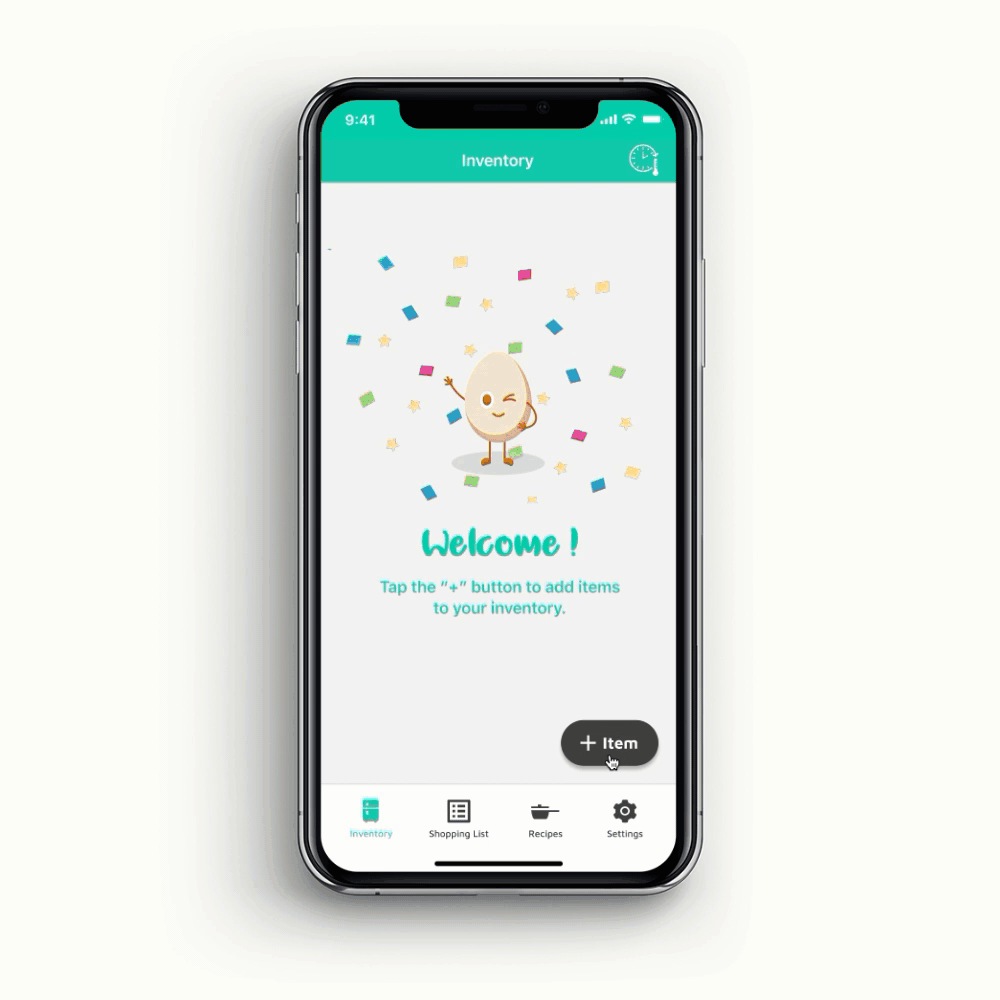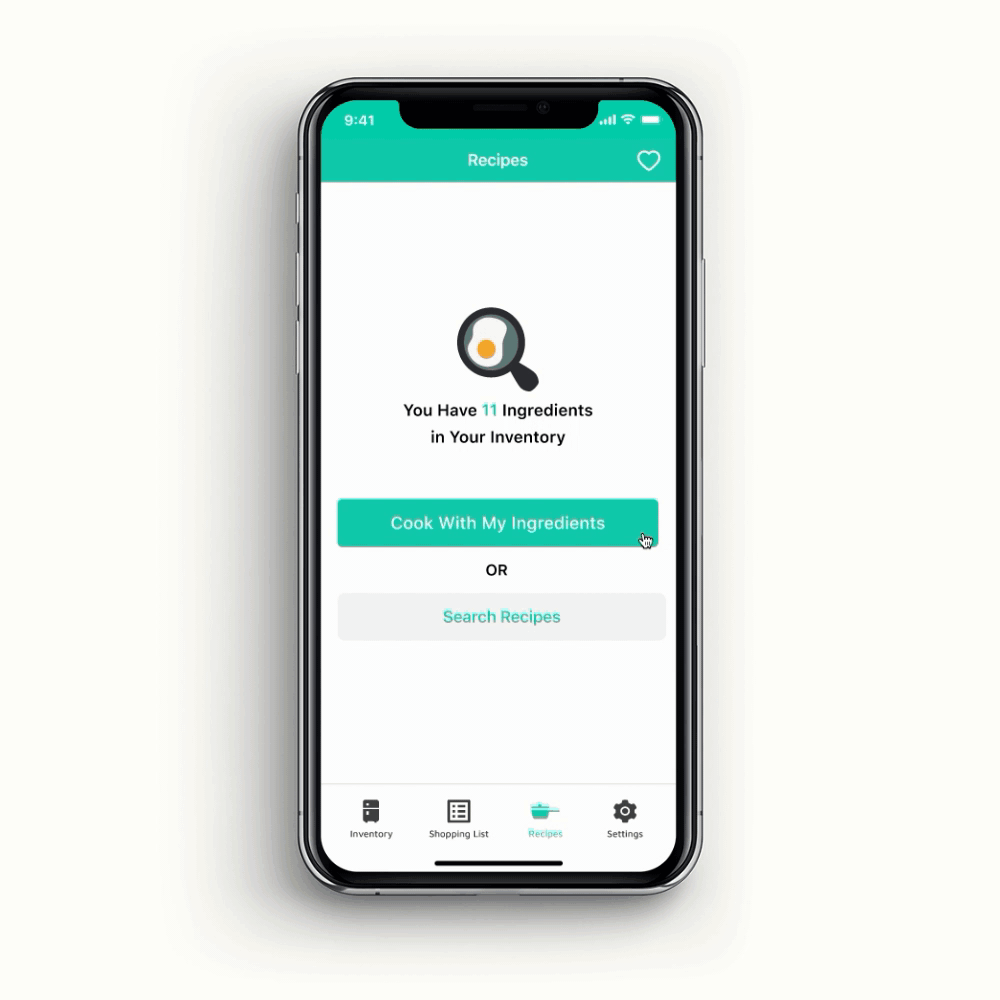

Helping American Households
Reduce Food Waste
My Role:
Tool:
Timeline:
Deliverable:
Type:
Research, UX Design, Branding, UI Design
Figma, Photoshop, Whimsical, Google Survey, Usability Hub
October - December 2019
Interactive Prototype for a New iOS Mobile App
Solo Conceptual Design
--
IDEO's Human-Centered Design Process

PROBLEM
People want to reduce food waste, but so often they find themselves throwing away produce that's gone bad, ultimately wasting food and money.

--
Environmental Protection Agency | Food Waste in America in 2019
My biggest inspiration stems from the concern about the environment:
How might we help people make simple lifestyle changes be more responsible about our consumption?
SOLUTION
All-in-one kitchen inventory manager, combined with a shopping and cooking planner
Check Food Inventory &
Track Expiration Date
-
Update inventory by barcode scanner
-
Expiry Reminders
-
Household account to manage inventory with family or roommates


Automatically Add Items to the Shopping List
-
Auto list based on what’s expired or running low
-
Routine list for repetitive items
-
Share shopping lists with roommates or family
Find Recipes with What’s in Your Kitchen
-
Filter recipes based on preferences
-
Save, rate and share recipes
-
Add missing ingredients to a shopping list

RESEARCH
More than twice as much food is wasted at the consumer level than at the retail level in the U.S:
Here are some major causes:




--
Source: "Food Waste in America in 2019: Statistics and Facts" by RTS, 2019
I built the foundation of my research by reading through online articles, reports, and guides from American food and health organizations.
The insights:
-
No one intends to waste food or gets pleasure from it, but life gets in the way: The purchasing habit, knowledge of food storage and safety, household routines, product packaging, and retailers' promotion ultimately attribute to the food waste in American households.
-
If we want to change people's mentality, we can relate to which can be beneficial to them -- Saving money is very beneficial, and saving time as well.
GETTING TO KNOW THE USERS
Three user personas were synthesized based on the user interviews and the insights below.
I used the personas to help me stay anchored on the users and avoid letting my desire for features trump user needs.

--
Three user personas synthesized based on user interviews
My respondents were unaware of how much food they had wasted and the personal and societal costs they incurred as well.
I conducted a user survey and had 45 respondents ranging in age from 18- 55. They were selected based on the criteria: The eco-conscious, millennials, busy individuals, or low-income citizens. I supposed these people were more likely to try a kitchen inventory tool to reduce food waste.




The insights:
-
People would like to be inspired to keep food out of the trash to save time and money.
-
Raising awareness or providing information to change behavior is not effective in the long term.
-
We need to offer practical solutions such as inventory tools, cookery classes, budgeting, planning support, and storage information on pack and etc.
COMPETITIVE ANALYSIS
I found a gap in the market in providing an all-in-1 tool to generate reminders, shopping lists, and recipes based on food inventory.

FRIDGELY
Inventory, shopping & Recipe

Yummly
Recipe & Meal Planner

Pantry Check
Food Inventory
The insights from the SWOT Analysis of the 3 competitors:
-
Food inventory: No one is going to update inventory if it requires too much manual work.
-
Barcode scanner & AI recognition: a time-saver to add items to inventory and shopping list but not reliable.
-
Items without barcode: Pantry Check's online user community is inspiring -- users upload the information of an item and other people can also search and add them to inventory.
-
Family account: a great way to improve user retention.
CONCEPT + STORYBOARDS
Like Aryo, Sara, and Marisa, we can be a major part of the change with food waste.
The storyboards helped me identify key moments in the experience of how to reduce food waste through using the app.


--
3 storyboards based on user personas and the concept
SITEMAP+ USER FLOW + SKETCH
The storyboards also revealed the key screens early in the product development process: Inventory, Shopping List, Recipe, and Setting.

-
Key user flow: Cook with my ingredients

-
Key screens on sketch paper: "update inventory" and "cook with my ingredients"



WIREFRAMES
I mapped out the MVP solution in Whimsical to help me identify key actions within the app and the screens to focus on first.
Before moving forward to the high-fidelity designs, I found it really important that I had the MVP to test with the real users to ensure the usability and functionality of the app.
I invited three interviewees for the in-person usability tests so that it was easier to capture key insights, observations, and ideas on the fly.
-
I wanted to make sure the app users could add an item to inventory.
Aryo: "Use "+" to add...It's not very eye-catching, but I found it."
Sara: "I don't think I will use manual add if I have a bunch of produces without barcode. It's too much work to do."

-
I wanted to make sure that the app users could check what to cook with the ingredients in their hands.
Marisa: "I like having options to cook with my ingredients...so I won't waste the leftover I used for other recipes."
Sara: "I can put the ingredients on the shopping list...so I don't need to switch back to the shopping list to add."

-
I wanted the make sure that the app users could invite other people to the family account.
Sara: "Shopping list and inventory update are no longer just my thing...Everyone in my family can edit them!"

ITERATIONS
Two major improvements were made based on the user feedback.
-
Iteration 1: Redesign the Inventory Screen


-
Iteration 2: Use "Look Up Items" to Add Items Manually


Takeaway
-
The last thing the users want to see is "manual work".
Manual work is where some food management apps also stuck. My users helped me realize that the more automatic the process is, the more chances I can attract users.
-
Building a database?
Adding items from the food library is quite a lifesaver; however, it can be a lot of work at the early stage. I'm curious to know if the online user community can play a big role in building up the database, and how to monitor the quality and safety of their uploads in the further steps.
-
Interviewing users after the tests inspired me! Even though the users could successfully finish a task doesn't mean there is no room for improvement.
BRANDING
According to the user survey, the users would prefer a brand that is built around simplicity and smartness, with an injection of fun.
Inspiration: I chose to use egg as the icon because it is quite common in users' fridges and it indicates that the app is related to food.
I did research in color theory to make sure I was picking the colors that represented freshness and joy to bring energy and motivation out when using the app.

FINAL PRODUCT
High-fidelity screens established a realistic experience to encourage useful feedback in the future.


--
GIF: Adding an item to inventory by barcode scanner
--
GIF: Cook with my ingredients

--
Sample screens
--
Marketing Website
CONCLUSION
Reflection
Outcomes
-
Deliverables
In 6 weeks, I designed and prototyped MVP screens illustrating the concept of Fridgee! and tested them with 3 users. -
Values
I hope Fridgee!'s concept can help American families save money and reduce the amount of food going to landfills. If I did launch this app, I would be looking at the conversion rate of family accounts.
What I would do differently
-
Instead of guessing, I wish I could invite a developer into the project discussions from the start so that he/she can sniff out the feasibility of my solution.
What I learned
-
Research is ongoing. Be sure to explore every possibility and don’t stop trying until I get a crystal clear direction.
-
Even though the users can successfully finish a task doesn't mean there is no room for improvement. By observing users' movements, facial expressions, and even mumbles, I was able to know how satisfied they were with the solutions. Many of the iterations came from the follow-up discussions with the users.



